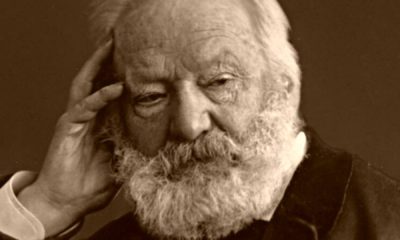Success Advice
3 Books to Help You Learn How to Write Better and More Effectively

“It’s been 2 years since I left writing, how would I start it again?” I cried to my friend. Telling him how I failed to generate regular income from sources other than writing, and how I am drowning in 1 million dollars of debt. I left writing because I felt it was the core reason for my depression, but I was totally wrong. It was not the writing that triggered my stress hormones, the real culprit was not knowing “how to write and grow”.
Hearing my story, my friend told me that continuing writing is the only way to get rid of my debt before I go bankrupt. I asked many of my writer friends “how to write”. They all said the same thing, “Find your voice”. I am not a believer in learning something just based on your voice. I believe that there is a formula for learning everything. For example, for my diet, I learned to eat small portions every two hours. Local homemade food. This is a timeless strategy. I wanted something like this for my writing.
In my writing-free days, I was reading like hell, learning everything that came my way, including stock market, psychology, diet, exercise, etc. From there, I got the idea and thought, “If I am able to learn everything from a book, why not learn how to write better?” My debt motivated me to learn writing quickly and start immediately, which is how I found three timeless books on how to write. Thankfully, all three books were short and to the point, which helped me get started with writing immediately. You don’t need experience to learn the formula discussed in the books.
Book 1: 2K to 10K Writing Faster, Writing Better, and Writing More of What You Love by Rachel Aaron
The title sounds like something one can implement to write faster. And the doubt to write before you learn to write faster crawls in. But trust me, this is the elixir of writing. In her book, Rachel first teaches you how to write.
How to begin? She shares a timeless formula which applies to all types of writing including fiction, non-fiction, advertisement, blogs, or whatever you dream of. Here’s the formula from Rachel Aaron: Setup – Action – Resolution
First, you show what’s going on (setup), then something happens (action), and at last you come up with a solution (resolution). Take any blog, advertisement or novel – everything revolves around this simple formula.
For experienced writers, this may sound too basic. But for me, the formula was no less than a godsend while I was drowning in debt. From the day I completed this book, I started applying for various freelance writing jobs. I convinced myself that I have to offer a free writing sample before I win the trust of clients. Within a week of my book completion and job application procedure, I landed my first client with regular pay for 5 straight months.
But I didn’t stop there. I knew my writing was missing something, which took me to my next popular book.
Book 2: On Writing: A Memoir of the Craft by Stephen King
Most writers have read this book and always keep it on their shelves. I did the same. An Amazon reviewer suggested that the second part of the book is worth a treasure for writers, while the first part is full of Stephen’s story. Desperate to get more writing projects, I skipped the first part and completed another writing course on sentence structure and the essentials of writing.
Where Rachel Aaron teaches the surface of writing, Stephen King peels a few deeper layers. He teaches you how to show instead of simply telling the story. He also suggests keeping sentences shorter and trying to go for “noun + verb” sentences to keep writing simple and easily understandable. Another tip I liked the most about editing is: Editing = “draft – 10%”. After reading this and submitting samples for free, I landed 2 more clients. One regular while the other gives me a blog once a week.
After 3 months, I was able to pay 80% of my bills. I was happy to reach that stage but I was still running out of money. And a few times, I received complaints of poor grammar. I apologized to them and bought a paid version of Grammarly. At the same time, I started non-stop practice of grammar with my third book.
Book 3: The Elements of Style by William Strunk Jr.
When I received this 100-page book, I fell in love with its teeny-weeny silver-colored texture. It’s so cute and small that I spent an entire day admiring its beauty. The next day, I started learning each grammar lesson.
To be honest, it was boring. But I had to do something to keep my writing away from language errors. So, I took notes of each lesson. Slowly, I started editing my own work as per the grammar rules, and soon enough, my clients’ grammar complaints reduced.
I still use the paid version of Grammarly, simply because you can’t remember each and every grammar rule. It’s a matter of constant reading and writing which takes years to master. Until then, I keep learning the grammar from this book and edit my articles as per the discussed rules.
Walking on the Path of Growth
Even today, after getting published on high-quality sites, I still swear by these 3 books. But I never stop learning from other writers. Being a writer, I realized that writing wasn’t my only issue, it was maintaining the schedule of constant writing and improving on it day by day. So, I subscribed to Medium for daily writing tips. From there, I never stopped learning. I pitch to high-quality sites with various topics, even if I get rejected. It gives me a challenge to improve more and a published article as a reward.
P.S. My debt is decreasing and my writing is improving day by day.
Explode Your Social Media
Want More Views? Master These 6 YouTube Growth Tactics
Getting a strong start or feeling stagnant are two completely different problems, but they both need momentum, viewer engagement, and growth to fix them.

Strategic planning combined with unwavering dedication allows you to rise above the chaos of YouTube—luck won’t get you anywhere. (more…)
Change Your Mindset
The Leadership Skill Nobody Talks About (But Changes Everything)
Curiosity often takes a back seat to certainty and gets labeled as a soft skill, which makes it sound obvious and easy

Most of us, when faced with challenges, instinctively seek certainty and answers. In turn, our ego steps in and prompts us to defend our views, double down, or perhaps disengage. (more…)
Success Advice
Breaking the Bias: How Females Can Thrive In The Workplace in 2025
The good news is that some steps can also be taken by female business leaders who are looking to voice and fight these issues, take charge of their careers, and grow their business or influence in the industry.

Over the past 100-odd years, women have played a critical role in the ever-changing labor force. (more…)
Success Advice
Success Isn’t Sexy: 5 Daily Habits That Actually Work
You’ll need to master the unsexy routines that build momentum in the background

There’s a gritty, unfiltered side of success that rarely makes it to our timelines or TED Talks. It’s not drenched in neon lights, wrapped in viral quotes, or toasted with champagne selfies. It’s quiet. It’s routine. And honestly? It’s often boring. (more…)
-

 Success Advice4 weeks ago
Success Advice4 weeks agoStephen Covey’s 8 Leadership Habits That Will Change How You Lead Forever
-

 Personal Development4 weeks ago
Personal Development4 weeks agoWant to Change the World? Start by Sharing Your Knowledge
-

 Business4 weeks ago
Business4 weeks ago7 Legal Situations Every Small Business Owner Should Prepare For
-

 Success Advice3 weeks ago
Success Advice3 weeks agoThe One Mindset Shift That Made Me Irreplaceable At Work
-

 Scale Your Business3 weeks ago
Scale Your Business3 weeks agoWhy Smart Entrepreneurs Never Skip This One Business Expense
-

 Success Advice2 weeks ago
Success Advice2 weeks agoHow Playing by the Rules Became the Smartest Business Strategy
-

 Did You Know2 weeks ago
Did You Know2 weeks ago7 Surprising Life Lessons Video Games Taught Me That School Never Did
-

 Success Advice1 week ago
Success Advice1 week agoHow to Build Trust, Kill Micromanagement, and Lead a Team That Thrives





























